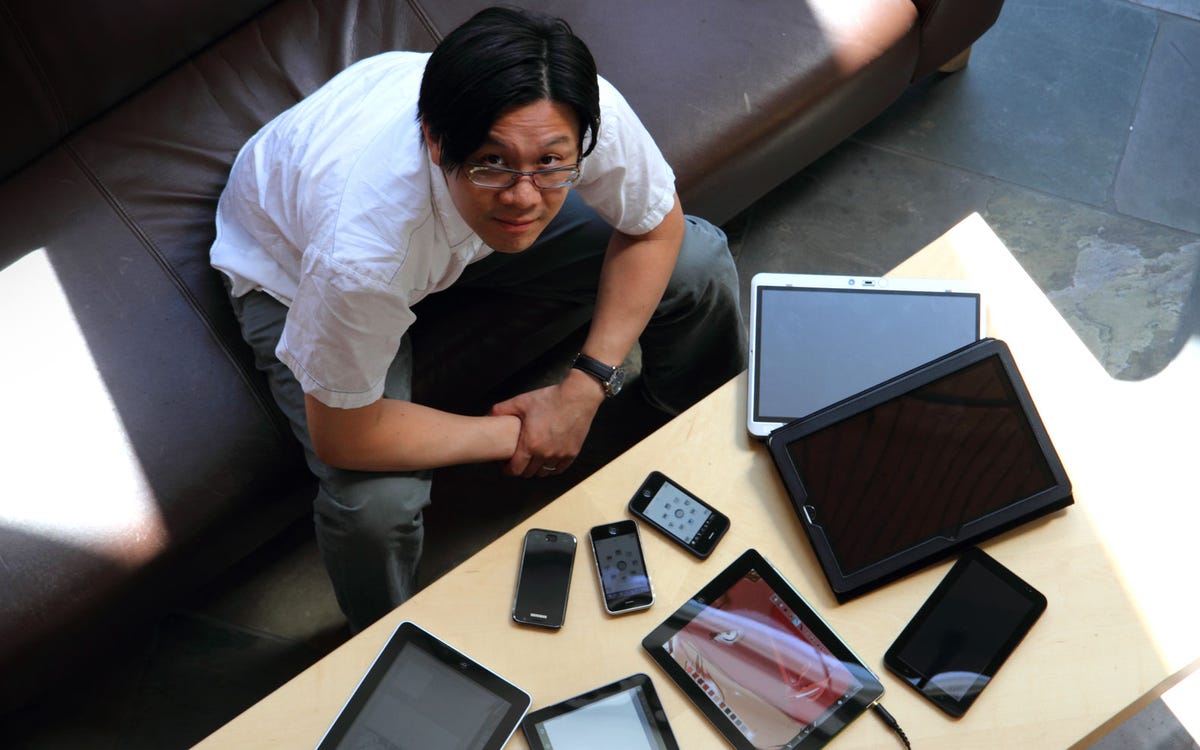
AutoDesk
When Autodesk’s SketchBook Mobile application launched two years ago, it garnered more than 1 million downloads within the first two months, propelling the company into a completely new business.
So it’s surprising that Chief Executive Carl Bass didn’t know about the application–which lets you make an array of sketches with your finger–until a week before the launch.
“We definitely didn’t have the attention of the company,” said Christopher Cheung, project manager in charge of SketchBook. “It was a small isolated project.”
SketchBook’s success was partly born of the extreme hands-off approach of Autodesk’s management team, a fact that holds lessons for other large corporations looking to get into the app world. The payoffs were huge: SketchBook served as a springboard for Autodesk to get into the business of providing design tools for the average Joe, a direction the company hadn’t previously considered.
Just as important, the success of SketchBook injected a little buzz into a stodgy company mostly known for catering to a specific audience of professional designers, architects, and artists.


Autodesk
Prior to its life as a mobile application, SketchBook was a much loved, but little used program for the niche market of tablet PC users who drew with a stylus. After taking over SketchBook as project manager in 2008, Cheung saw the potential in expanding the program to the mobile world after Steve Jobs announced Apple would be opening its iOS software to developers.
The development team had an eye toward an eventual place in Apple’s tablet, but Cheung said at the time he didn’t know if it would run on the mobile-centric iOS software or the Mac’s OS X, so he took a gamble on focusing on iOS.
For a large part of the following year, he and a trio of developers tinkered around with a mobile version–largely on their own time, as they attempted to bring SketchBook to a new platform.
“There was a lot of passion for the project,” Cheung said. “A lot of this was driven because we really loved the SketchBook product.”
Though apps are insanely popular now, back in 2008 there was no way to predict how successful they would be. So, Cheung said, the mobile SketchBook project team got its share of “weird looks” from people in other departments. Some saw it as an experiment or marketing tool, but not necessarily a moneymaker.
It’s easy to understand why. SketchBook represented a foreign business model to the company, which was more used to selling highly expensive software to professionals, most notably the architectural drafting program AutoCAD. When Cheung’s team knew it wanted to take the app public, he had to run it by the legal, marketing, operations, and business departments to make sure the company could even do it.
“Our apps are on a different scale than the high-end tools,” Cheung said.


Pixar Animation
As it got closer to launch, word began to trickle up to senior management. But most of the executives, including CEO Bass, didn’t find out until a week before it was scheduled to hit the App Store.
“Even when we had the green light to get it to market, it wasn’t on the radar of everyone in the company,” Cheung said.
Since then SketchBook has been a hit. The app has garnered 5.5 million downloads, with 1.5 million customers paying for the app. Cheung said the company is working on an in-app system for users to buy upgrades on the fly. The application is now available on the iPhone and the iPad, as well as on Android phones and tablets.
It’s had a wider effect on Autodesk than just additional revenue. Its success has fostered the development of a line of consumer-focused applications, including online photo-editing software Pixlr, 3D modeling software 123D, and Homestyler, an app designed to help people visualize home changes or renovations.
Autodesk’s consumer initiative led to its acquisition of Instructables, an online community for people who are interested in do-it-yourself projects. The deal was announced earlier this month.
It also led to the appointment of Samir Hanna as the head of the newly created consumer products group at Autodesk.
“As a result of this acquisition, Autodesk will host a unique ecosystem that combines inspiration, accessible 3D software tools, and fabrication services so anyone can be empowered to express themselves creatively,” Hanna said at the time.
And to think, it all started as a side project for a handful of passionate employees.



